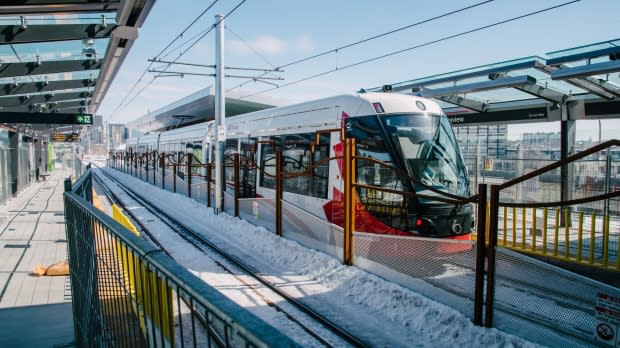A tale of 2 subways: Comparing Ottawa's LRT to Montreal's Metro
Ottawa's 13-stop, 12.5-kilometre Confederation Line has been under construction for more than six years and missed four deadlines.
More than 50 years ago, the City of Montreal managed to build a complex, 26-stop subway system — including a connection below the St. Lawrence River — in less than five years, on time and on budget.
So how was Montreal able to pull off a project twice the size, and do it in less time?
1. Keeping deadlines
The City of Montreal designed and built its $213-million Metro with an eye on Expo 67, and in a 1963 interview then mayor Jean Drapeau promised the rubber-tired subway would be ready in time and on budget.
Drapeau delivered, and the Metro opened in 1966.
Ottawa Mayor Jim Watson made no such promises. However, he had originally hoped to have the above-ground portion of the Confederation Line completed by Canada Day 2017, and for the trains to be up and running by the following spring.
The Rideau Street sinkhole put a wrench in those plans.

2. Different safety standards
According to Benoît Clairoux, the Montreal Transit Corporation's unofficial historian, 70 per cent of the Metro's tunnels were blasted through the rock using explosives. The rest involved ripping up streets or vacant lots.
Ottawa's $2.1-billion system is less disruptive, at least on the surface: its 2.5-kilometre tunnel was dug entirely with three subterranean boring machines.
The Montreal project was also marred by a series of serious construction accidents, claiming the lives of 12 workers before the first trains ran.
With more stringent safety standards, the Confederation Line project has seen a few injuries, but no fatalities.
"We want to ensure that during construction and after, we always have something safe and reliable," said OC Transpo spokesperson André Brisebois.

3. Different technology
You might assume that as technology advances, the length of time it takes to complete such major infrastructure projects shrinks. But you'd be wrong.
According to Brisebois, the Confederation Line is a much more sophisticated system than the Montreal Metro when it was first introduced.
In 1966, human operators controlled the Metro trains. When Ottawa's LRT system finally opens its doors to passengers, human operators will still be in the driver's seat, but machines will be running the system.
Everything is computerized, but that takes more time to develop, install and to test. OC Transpo said it doesn't want to compromise the safety and efficiency of its LRT network.

4. Public vs. private
From beginning to end, the City of Montreal was the prime contractor on its Metro project. Ottawa hired a private consortium, Rideau Transit Group (RTG).
University of Ottawa law professor Gilles LeVasseur said there's an assumption the private sector is more effective at managing projects and reducing costs, but that's not always the case.
Just ask the City of Ottawa.
"We trust the private sector because the private sector makes promises, with delivery and deadlines that seem very attractive. The problem is that they're often not able to meet the requirements, and are always asking for delays," LeVasseur said in French.
The latest deadline for Ottawa's light rail project is now August.


